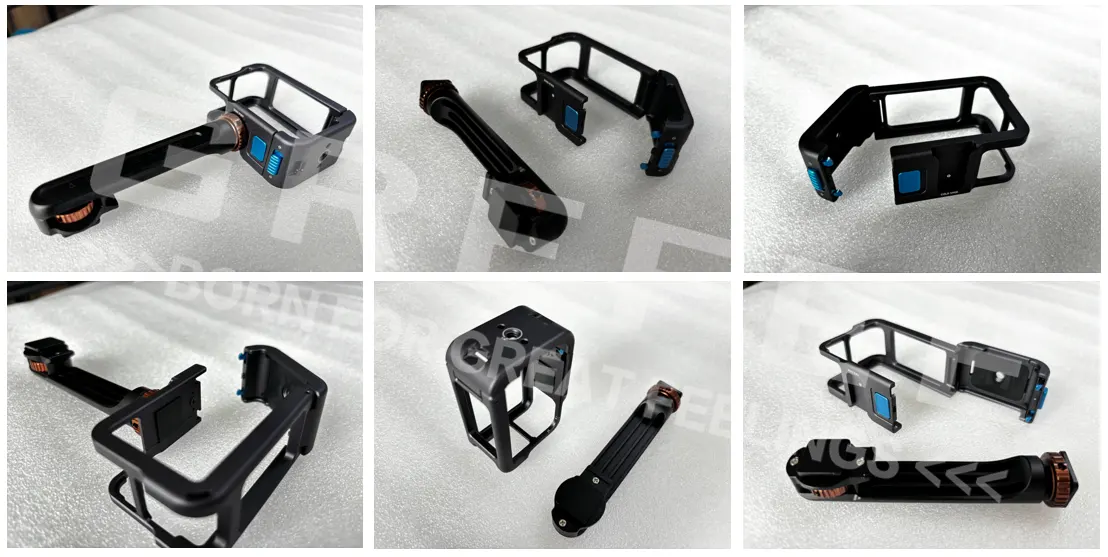
Camera Protective Housing Rugged Protection, Capturing Every Wonderful Moment
Writer: Christopher Role: Manufacturing manager
In the world of light and shadow capture, every shutter press carries the preciousness of a moment—whether it’s the fleeting scenes in extreme sports or the freezing of hidden wonders during outdoor adventures. The camera protective housing serves as a solid defense line between the device and the environment.
GREFEE’s precision-customized camera protective housing series for photography enthusiasts interprets the true meaning of “protection equals peace of mind” through military-grade craftsmanship. It covers a variety of categories such as cage camera protective cases, GoPro protective housings, and handheld camera protective housings, allowing every shooting session to be free from worries.

Project Overview:
In 2022, our European bicycle end customer placed a bulk order for aluminum alloy pedals with GREFEE. During the production of the pedals, the customer visited GREFEE for an inspection. While observing the CNC factory’s processing workflow, they accidentally learned about our rich experience in manufacturing aluminum alloy camera protective housings in the past.

During the conversation, the customer proactively mentioned their desire to develop an exclusive GO PRO camera housing. However, camera housing design was not their strength, and hiring a design company in Europe to create such a housing would be extremely costly.
Benefiting from its profound accumulation in R&D and manufacturing of camera housings for numerous global customers, GREFEE’s team deeply participates in every link from design conception to processing implementation. Moreover, we can provide highly valuable optimization suggestions based on actual application scenarios. After understanding the customer’s general ideas, we responded quickly—GREFEE’s design team created a simple housing for the customer’s GO PRO within 4 hours.

When the customer saw the design sketch, they were extremely surprised by GREFEE’s quick response, efficient design, and innovative capabilities, and were also looking forward to the subsequent cooperation. At the same time, they put forward additional requirements, such as lightweight, convenience, expandability, and safety.
Lightweight
A lighter camera housing can provide more room for functional expansion, which is particularly advantageous in special shooting scenarios. For example, when the camera is attached to the exterior of a vehicle for shooting, the lightweight design can directly reduce the requirement for adsorption force. Even when driving on bumpy roads, the lighter camera weight can improve adsorption stability, effectively avoiding the risk of equipment falling and thereby indirectly enhancing the safety performance during shooting.
Lightweight Optimization Solutions and Material Upgrades
Compared with complex structural redesign, the lightweight optimization path and solutions are simpler and faster. It is mainly achieved through a combination of structural weight reduction and material upgrades, while ensuring that the protective performance of the bracket remains undiminished.
Structural Weight Reduction Solutions
Reduce weight by decreasing the material thickness of the bracket and adding hollowed-out designs. However, considering that reducing the thickness will weaken the protective capability of the bracket, it is necessary to use higher-strength materials to make up for this deficiency.
Material Upgrade Decision
Upgrade the originally planned aluminum 60 series material to aluminum 70 series (such as 7075-T6). According to calculations, with the bracket size unchanged, the new material can increase the bracket strength by approximately 30%. Even if the bracket size is further reduced, the original strength can still be guaranteed, leaving room for subsequent design optimizations.
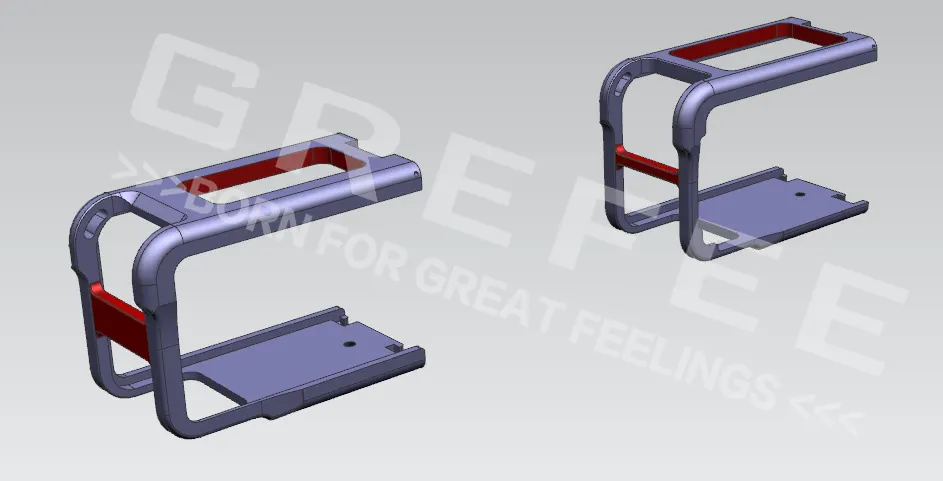
Structural Modification – Housing Hollowing for Weight Reduction
The hollow size on the top of the housing was expanded from 20×40mm to 26×47mm, and the width of the side limiting plate was reduced from 10mm to 3mm. The overall weight was reduced by approximately 6 grams, accounting for 5% of the total weight of the bracket. At the same time, the larger hollow area greatly improved the heat dissipation performance of the camera, providing a stable temperature environment support for long-term continuous shooting.
Structural Modification – Optimizing the Fixing Structure
On the premise of ensuring the strength of the housing, the fixing structure was optimized in a streamlined manner: except for the necessary fixing points, the redundant outer ring fixing design was removed to reduce the contact area between the camera and the housing. The overall width of the fixing surface was reduced from 3mm to 2mm, and priority was given to choosing corner positions for fixing to minimize unnecessary weight.
Through the external-to-internal structural optimization of the housing, the overall weight was reduced by approximately 11 grams, accounting for 9% of the total weight, achieving the ultimate design of bracket weight reduction.
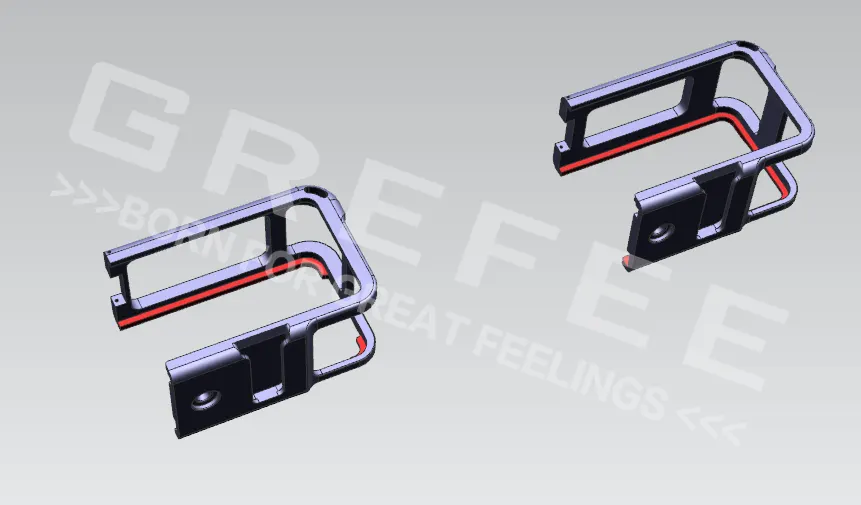
Convenience:
Optimization of Vertical Shooting Stability and Switching Convenience
For the vertical shooting scenario of the GO PRO camera, we added a universal quick interface on the side of the housing. Installation can be completed using a regular 1/4 screw, meeting the basic fixing needs for vertical shooting. At the same time, considering that the device is prone to swinging due to weight distribution during vertical shooting, we reserved 2 positioning holes on both sides of the quick interface.
The positioning hole design reduces the swing amplitude of the camera during vertical shooting and movement by approximately 60%, significantly improving shooting stability. In addition, with the combination of the quick interface and positioning holes, quick switching between horizontal and vertical shooting modes can be realized, improving operation efficiency and equipment safety performance.
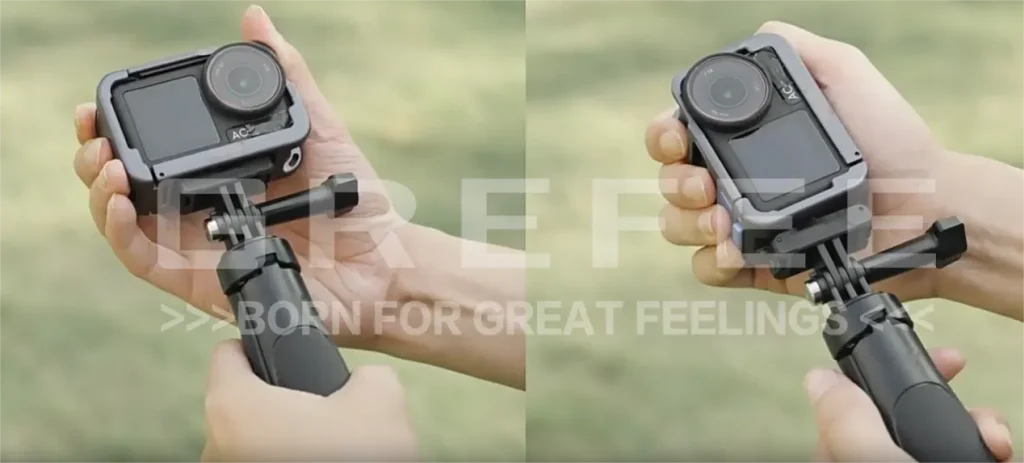
Battery Replacement Convenience
Combined with the usage habits of GO PRO, an exclusive quick battery replacement interface was designed: there is no need to take out the camera, and battery removal and replacement can be completed just by pushing the slide-type switch on the side of the housing. This greatly shortens the operation time between shooting intervals and improves the convenience of use in outdoor or continuous shooting scenarios.
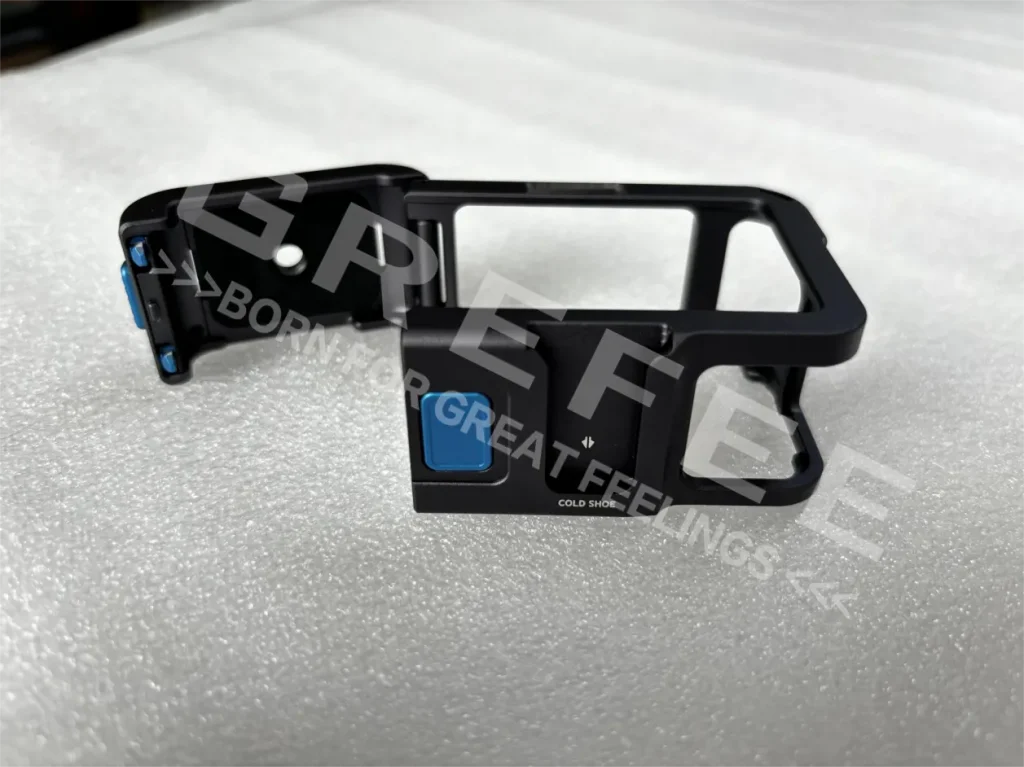
Expandability
Based on different usage environments and functional requirements, while retaining the original hand strap hole of the housing, we focused on upgrading and optimizing the expandability. The core improvement revolves around the handle function: by adding a quick installation mechanism at the handle, the user experience of “install and expand immediately” is directly realized, greatly simplifying the accessory connection process.
The optimized handle enables the camera to unlock more diverse installation methods, which can accurately meet the core needs in outdoor cycling scenarios: whether it is head-mounted fixing for first-person perspective recording, bicycle-mounted fixing for freezing cycling tracks and road conditions, or external vehicle motion fixing for high-speed dynamic shooting, all can be easily achieved through the quick installation mechanism of the handle, breaking the scenario limitations of fixing methods.
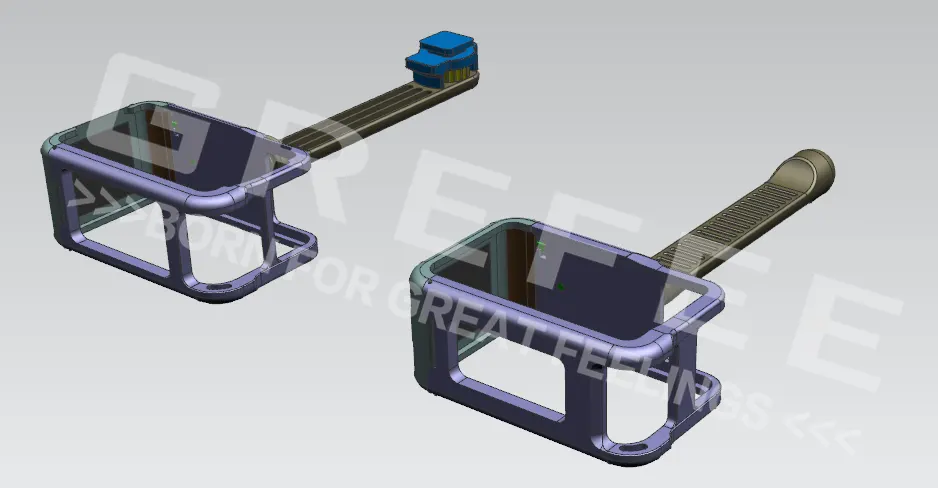
With the newly added expandable interface on the handle, the camera can be firmly fixed on the side or top of the helmet by simply assembling and adapting to head-mounted accessories—no need for hand-holding, and no need to worry about equipment shaking. Whether it is the road details during sharp turns or the wind speed and light shadows during downhill, all can be completely recorded from a clear and stable perspective.
For bicycle cycling scenarios, the expandable design of the housing supports multiple vehicle-mounted fixing methods: the camera can be fixed in the center of the handlebar through an adaptive bracket to accurately capture the front road conditions and cycling posture; it can also be installed on the side of the frame to record the interaction details between the wheels and the ground, or the perspective of oncoming vehicles from behind, adding a layer of protection for cycling safety.
With the expandable interface and dedicated vehicle-mounted bracket, the camera can be fixed on the side of the vehicle body, roof, or bumper. Even when driving at high speed or on bumpy roads, the combination of the lightweight housing and high-strength bracket can resist vibration and prevent equipment displacement.
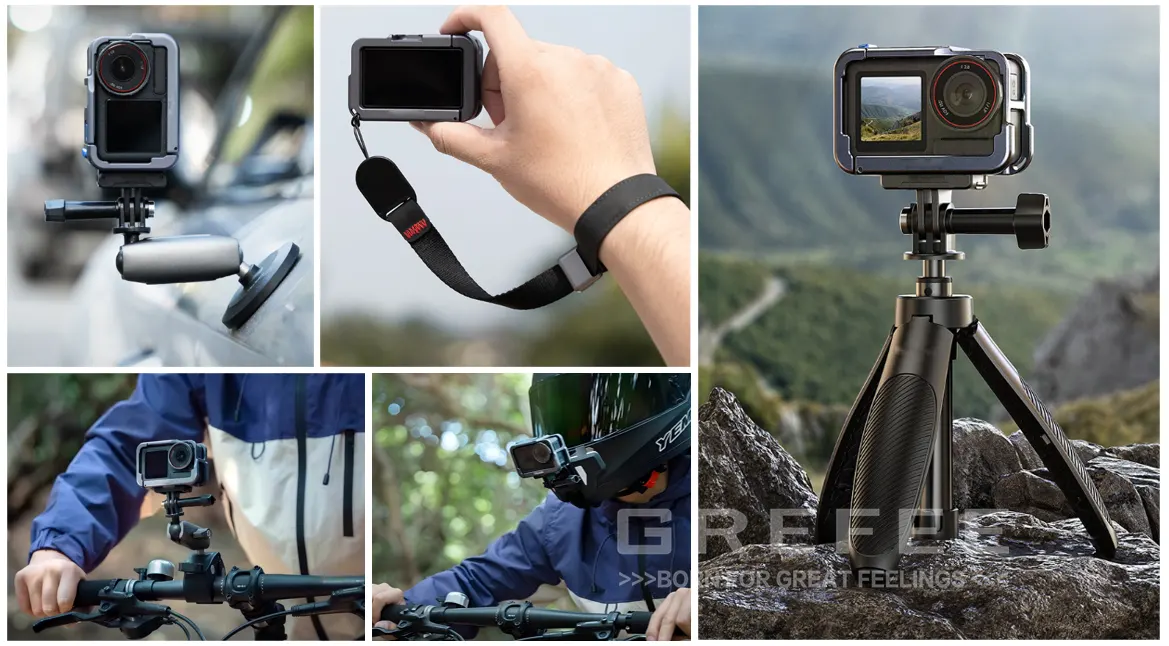
Safety
As the first line of defense for the device, the camera protective housing needs to balance impact resistance and body fit. Material strength is the primary factor, and shock absorption design and structural strength are the core guarantees of the camera housing. When optimizing the product weight, we selected the 70 series material. Compared with the 60 series, the 7075 material is superior in all aspects of performance to 6061.
Material:The camera housing made of 7075-T6 can meet the bracket load-bearing and anti-vibration requirements without increasing the thickness. It can reduce weight while ensuring strength, perfectly adapting to the camera’s outdoor use environments such as vehicle shooting on bumpy roads and cycling head-mounted fixing.

Shock Absorption Design
In terms of design, a large area of high-toughness shock-absorbing material with a thickness of 0.6mm was added to the left and right sides and the bottom of the main body interior. The addition of the shock-absorbing material can effectively improve the direct contact between the housing and the camera, thereby enhancing the camera’s protective performance. Tests have shown that it can withstand an impact from a height of 2 meters without damaging the internal camera.
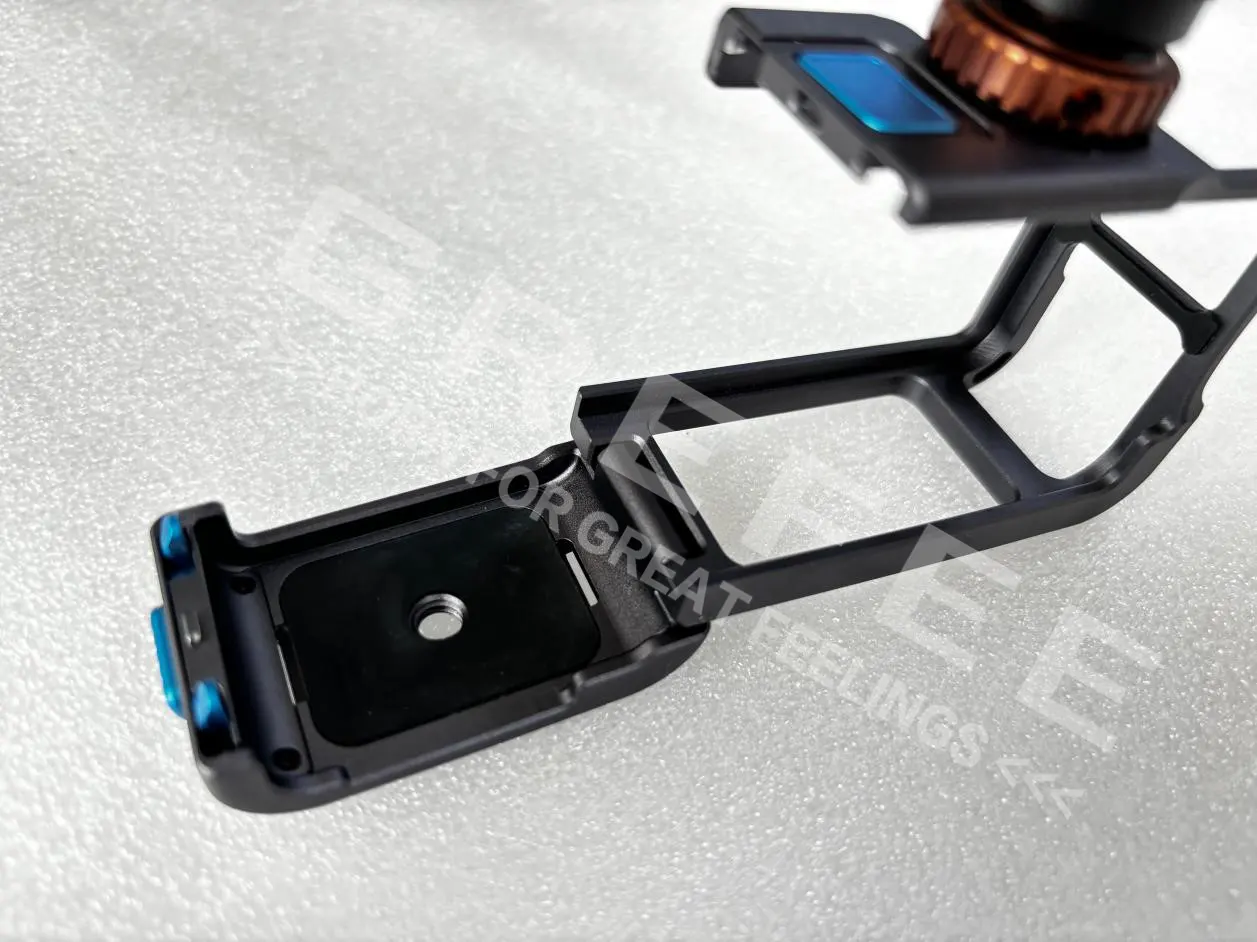
Structural Safety
In the design of the locking structure, we simultaneously added a highly practical protective safety mechanism. Through a combined design of material selection and counterweight optimization, a reliable automatic locking function was realized.
We designed two strong magnets embedded in the bottom of the shock-absorbing material, and at the same time, specifically adjusted the counterweight ratio of the two magnet locking covers. By increasing the weight of the bottom of the locking cover, a “heavy bottom and light top” center of gravity distribution was formed. When the locking cover is in the to-be-locked state, it can automatically complete the locking action with the dual effect of its own gravity and the adsorption force of the magnets. This design completely avoids the possibility of the camera falling due to incorrect locking, also simplifies the operation process, and through the cooperation of the shock-absorbing material and the magnets, improves the impact resistance and anti-loosening performance of the locking structure, further ensuring the safety of equipment use.
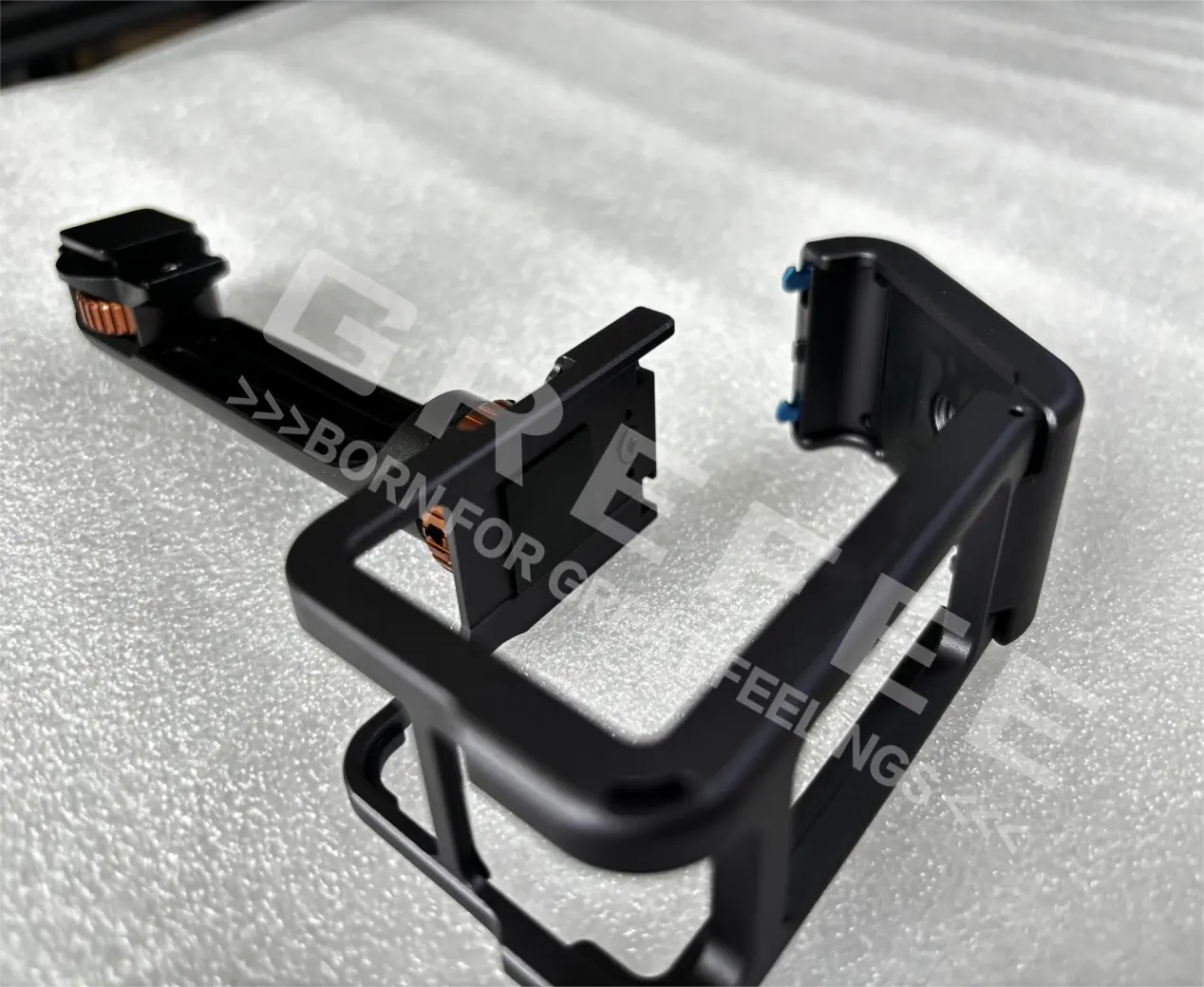
Design Highlights
Ultimate Lightweight: The overall weight is reduced from 135 grams to 108 grams, a 20% reduction in total weight, relieving fatigue and suitable for long-term shooting.
Convenient Battery Replacement Design: Optimized layout and structure for easy quick battery replacement, shortening battery replacement time.
Comprehensive Expandability: Equipped with multi-directional expansion holes and universal accessories, flexibly compatible with various mainstream accessories to achieve multi-purpose use.
Dual Safety Guarantee: The combined design of counterweight and magnets ensures 100% safety, no risk of falling, and reliable safety protection.
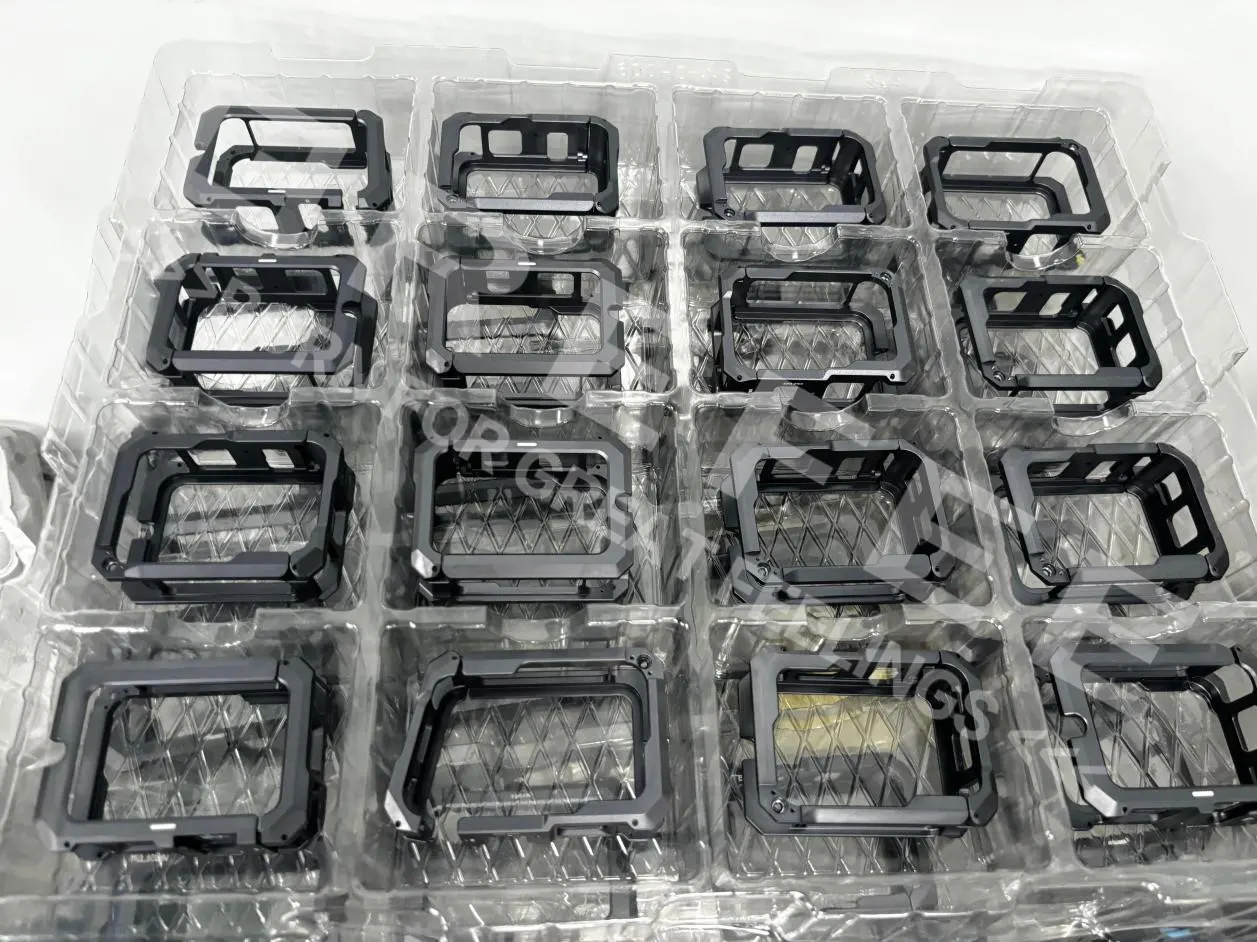
From lightweight design to adaptation to extreme environments, from precision to undamaged protection against 2-meter drops, every detail of GREFEE’s camera protective housing provides protection for “capturing moments”. We are committed to providing customers with one-stop solutions from product design to mass production, customizing reliable and lightweight processing solutions according to their needs, ensuring that projects can proceed efficiently and smoothly, creating value for customers, and working together to develop in the field of photographic equipment.
